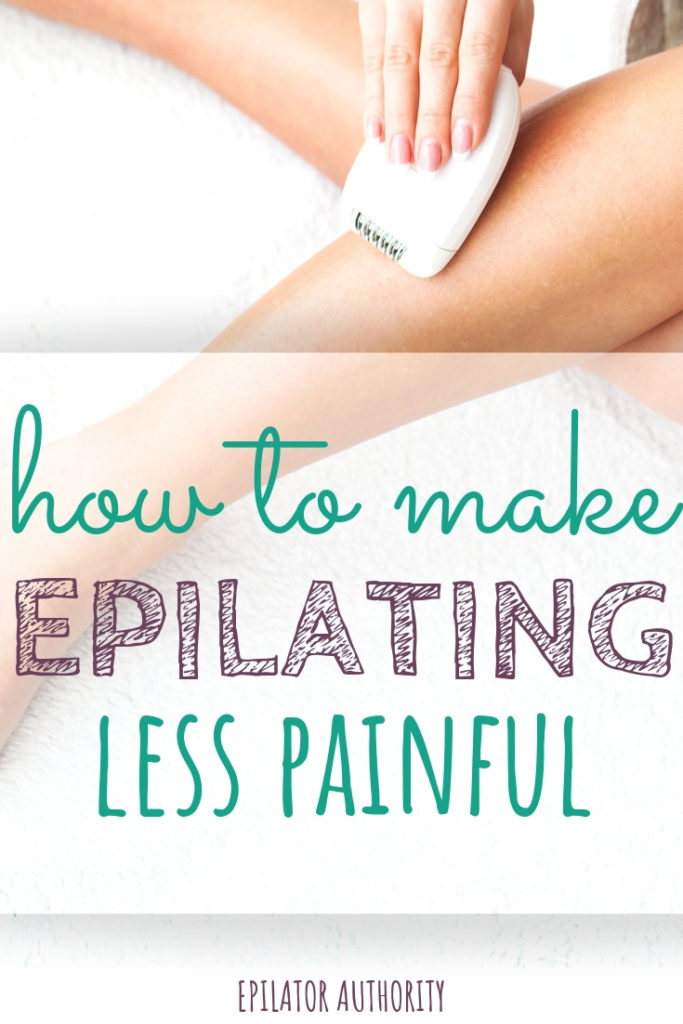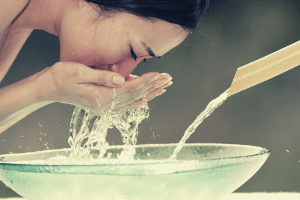At my day job, I help people with both chronic and acute pain problems. This has required me to learn about the latest research on pain and the best approaches to preventing and treaing pain. And luckily for people who are concerned about epilator pain, this information is helpful for reducing pain when epilating too.
So how to make epilating less painful? Pulling hair taut, using pain medication and numbing cream, and using ice after are three strategies to help with epilator pain, You can go a step further, though, and use knowledge from pain science to your advantage to trick your nervous system into feeling less pain right away and in the future.
Let’s take a look at how the nervous system processes pain and the best steps to take to make your first epilation session as painless as possible. Then after those first few sessions, epilation should be a piece of cake for most people.
Life is pain, Highness. Anyone who says differently is selling something.
-Man in Black, The Princess Bride

Pain Science 101
Pain science has come a long way in just the last few years. We used to think that pain was exclusively caused by a painful stimulus, such as a hot fire, being sensed by our sensory nerves called nociceptors. These nerves send a message to the brain and then we experience pain.
With this model of pain, the only way to stop the pain is to stop the stimulus that causes pain (the fire) or block the nerves that send pain signals to the brain with medications or injections.
But that’s not the story of how pain really works. Ultimately, the brain decides if you feel pain or not, no matter what is going on in your body.
These nociceptors nerves in the skin send messages really, really slowly compared to many other nerves in the body. Therefore, the brain recruits other sensory stimuli at the same time as well as memories of past experiences to quickly guess what is going on in the body. It is doing this 24/7.
So your brain is constantly making judgments about whether something is dangerous or not, even before any nociceptor signals reach the brain. If your brain has determined, based on past experience, that everything is safe in a specific moment, then you will feel less pain once that nociceptor signal reaches the brain. It doesn’t matter what the painful stimulus is.
Basically, the more advanced parts of the brain will take that pain signal information and decide that it isn’t that important, and so it won’t “allow” you to feel intense pain.
If this sounds way too complicated or complete nonsense, I totally understand.
Just keep in mind that making your nervous system feel relaxed and safe before, during, and after epilation is the best way to keep pain levels down and cut them even more over time.
The Gate Control Theory of Pain
Another concept in pain science is the gate control theory of pain. Essentially, the idea is that the brain can only process one type of sensation at once. While that sensation is processed, a metaphorical gate closes and no other sensory information is sent to the brain.
To use this information when you are epilating, you need to create novel sensory input on your skin before and during epilation so that the epilation pain is blocked.
How to Use an Epilator Without Pain
There are several important steps you can take to make epilation less painful:
Relax!
From my little intro to pain science, you learned that making the nervous system feel safe is the best tool for preventing and reducing epilator pain. So how do you do that? Calm down before you start epilating.
Do some yoga, meditation, breathwork, go for a walk, or just lay on your bed for ten minutes listening to calming music. Whatever works for you to calm down.
Then set up a calming environment for your epilation session. Light some candles, play relaxing music, turn off your phone’s notifications, and make everything as comfortable as possible.
Skip the Coffee
Another way to make sure you are relaxed as possible is to avoid caffeine and other stimulants like ADHD medications for at least six hours before you epilate.
Remember to Breath
Not just deep breaths. Slow, deep breaths where you are exhaling more than inhaling. This activates your parasympathetic nervous system (aka “rest and digest” mode) and calms your whole body.
Close the Gate
Apply the gate control theory of pain to your epilation session. One way to do this is with water. Hot water hitting your skin from a shower or just soaking in a tub while you epilate can help immensely. Just make sure you have a waterproof epilator!
Another option is to pinch your skin and epilate the hair on the top. Move your fingers along and keep pinching new areas to epilate.
Beyond these two options, you can use topical creams that create new sensations in the skin. Anything with camphor, menthol, or peppermint, like Icy Hot or Biofreeze, is great for this.
Wax or Shave First
You want to make sure your hair isn’t very long when you first epilate. Wax or shave the area, then give it time to grow to about 1/8 inch long and then epilate.
Pull Skin Taut
Pull and stretch your skin as you epilate. This will make sure you don’t accidentally pinch loose skin, will make the process go faster, and will reduce overall pain.
Wait for the Right Time of the Month
If your menstrual cycle affects your pain levels, you will have more tolerance for pain a few days after your period ends. If it is right before your period is about to start, it is a really good idea to put off epilation since this is when more women are more vulnerable to pain.
Drugs
Lidocaine creams can be a lifesaver when epilating. These creams are available OTC with low concentrations of lidocaine, a pain relieving agent. Just slather on before you epilate.
If all else fails, there are also OTC pain medications you can use for your first few times like Tylenol. Take one 30 to 45 minutes before you plan to start. It is not recommended that you use these forever, but they can make your first few sessions easier.
Ice Your Skin
After epilation, use ice or an ice pack for 10-20 minutes to reduce inflammation and pain.
Is Pain-Free Epilation Possible?
Using an epilator hurts. Sometimes really, really badly. Other times, not so much. If you are über sensitive to pain, it’s probably not the best hair removal method for you. Otherwise, using a mix of strategies can help reduce epilator pain. And the convenience of epilation can make that pain worth it.
And the best news is that epilator pain diminishes over time for most people. When you get ready to epilate, remember the tips in this article. With a little time and practice, you’ll build your tolerance to epilator pain and be on your way to pain-free epilation.
Related Questions
Is there a pain-free epilator?
There are no epilators that are completely pain free. However, if you are looking for the least painful epilator, choose a wet epilator with a massaging head like the Braun Silk-épil 9 (click to check it out on Amazon). A wet epilator lets you use water to help with pain while epilating and the massaging head also reduces pain.
Do hair removal creams hurt?
Hair removal creams are not supposed to hurt, for the most part. If they do, you are probably using them incorrectly or are sensitive to the chemicals in them and should try another hair removal method. Read my article on the side effects of hair removal creams to learn how to reduce your chance of experiencing pain.
Have more questions about epilation? Check out the Epilator FAQ and Beginner’s Guide!
Want to remember this? Pin this to your favorite Pinterest board so you can find it later!


